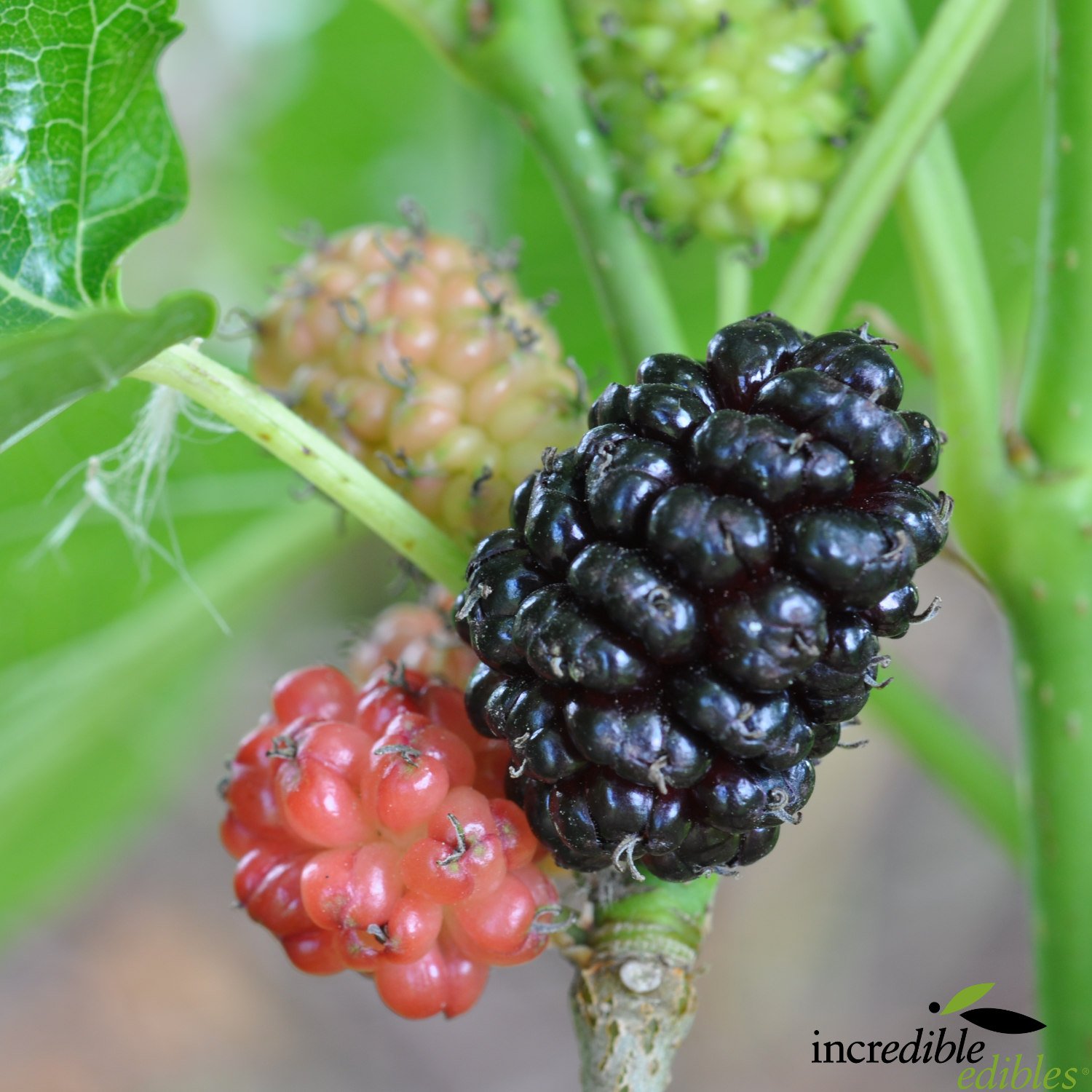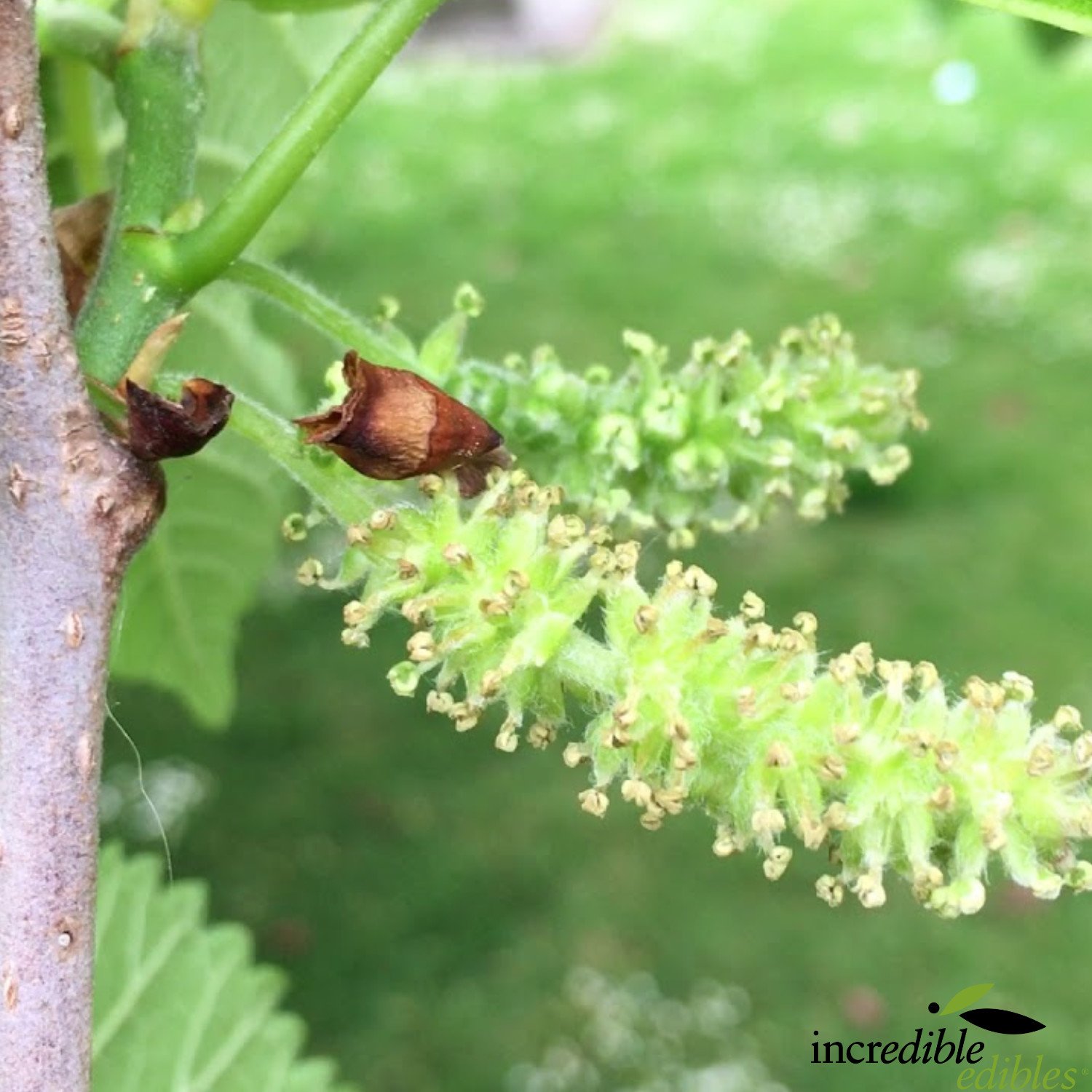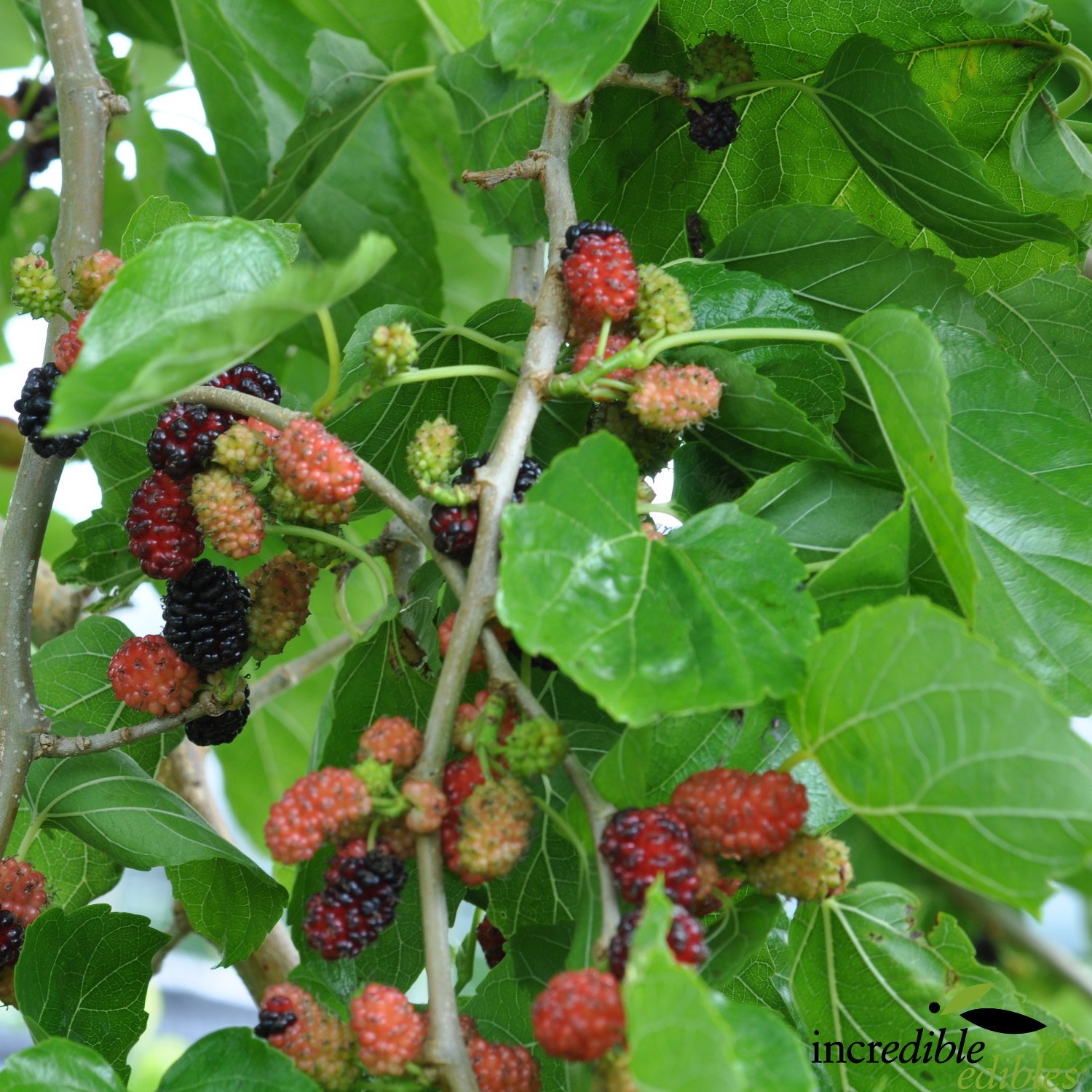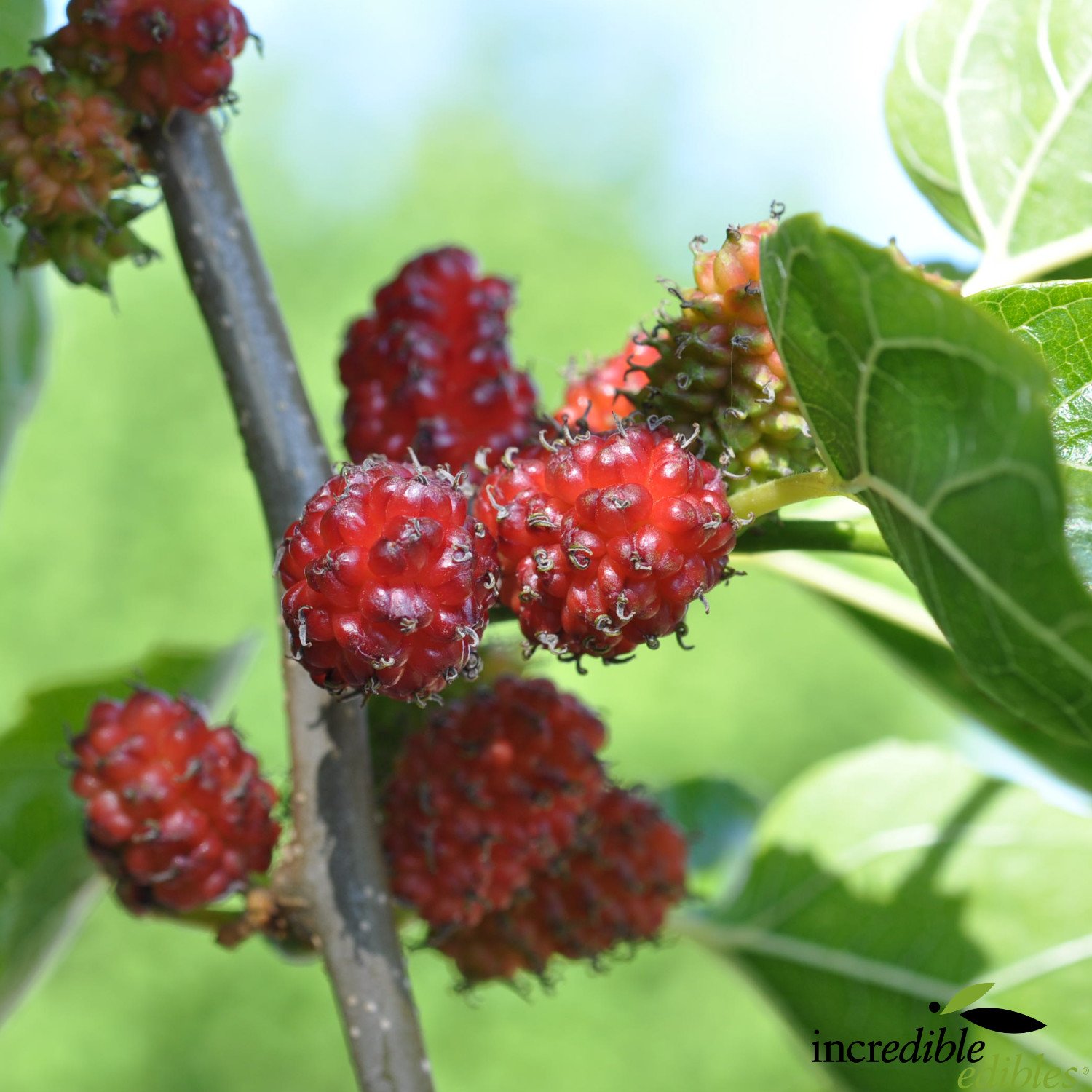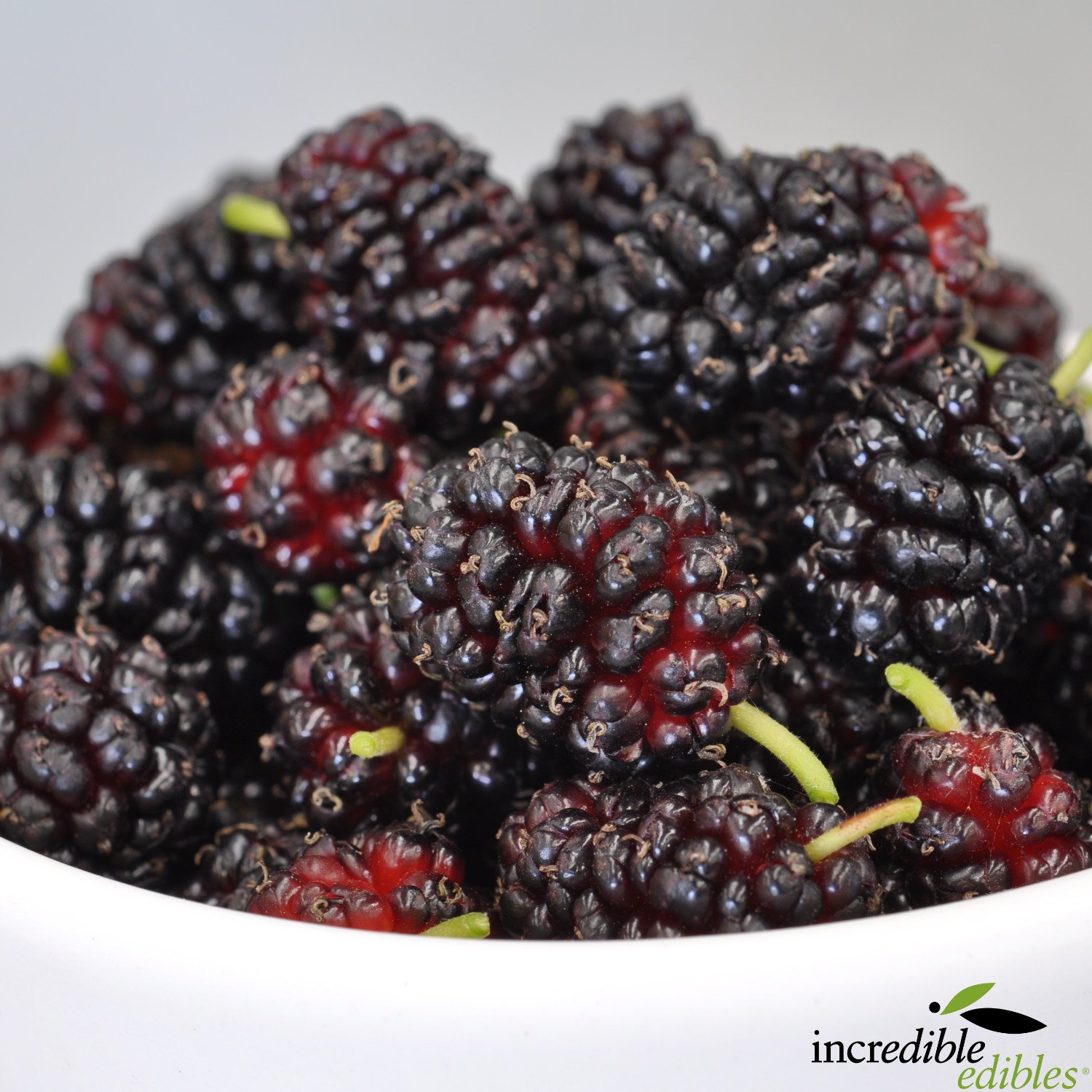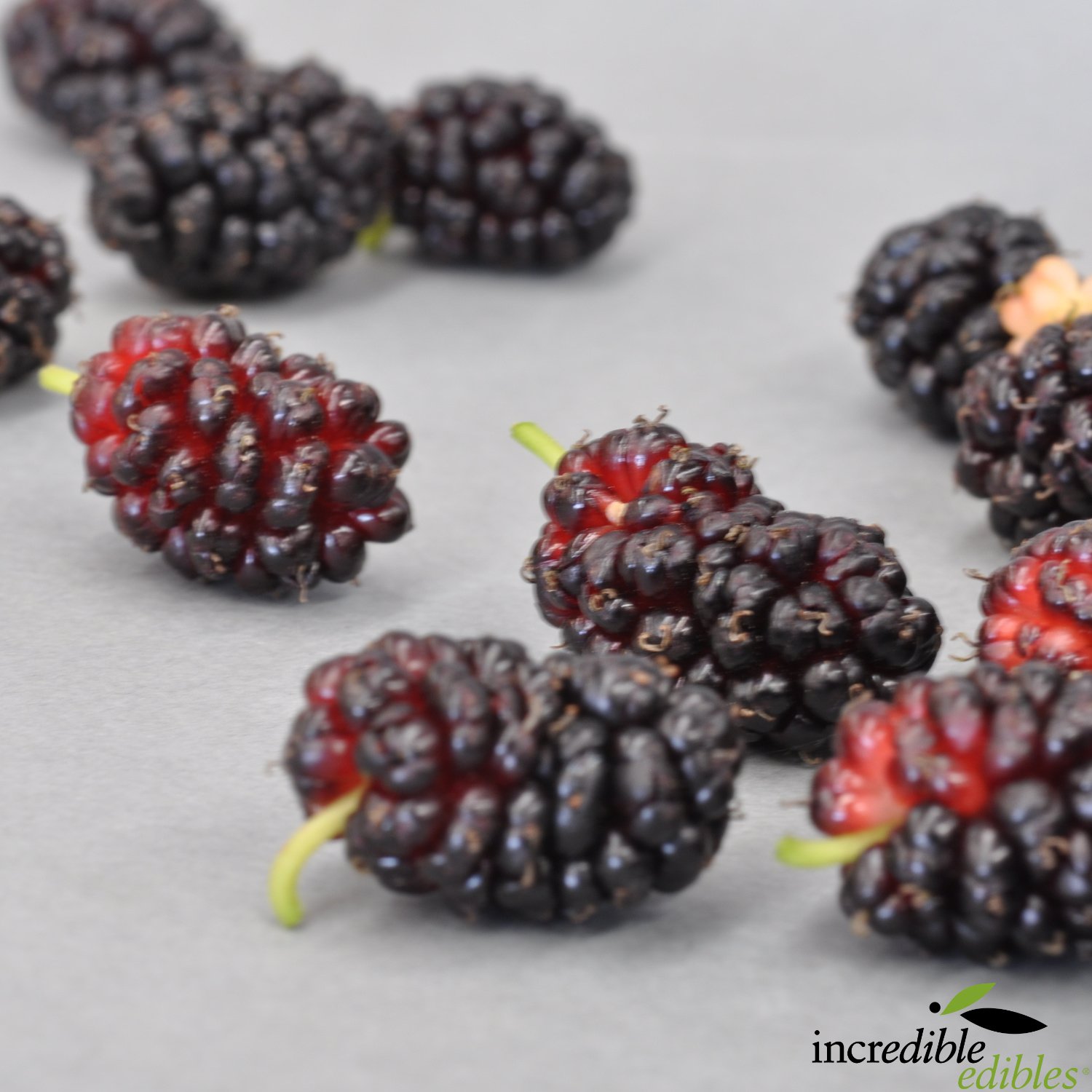Mulberry Hicks Early
Mulberry fruit has been eaten in the Middle East for at least 3000 years. A fast-growing upright tree reaching approximately 6 x 6 metres. Flowers appear in early spring and are yellow/green pendulous catkins. Separate male and female flowers both appear on the one tree. (Male catkins are more slender than female catkins.) Self-fertile and wind-pollinated.
Harvest: Ideally, spread a cloth below the tree and let fruit drop onto this; harvest can continue for three months. Daily collection is ideal. (Harvest is from November to January). Fruit will keep up to a few days fresh in the fridge.
Mulberry fruit has been eaten in the Middle East for at least 3000 years. A fast-growing upright tree reaching approximately 6 x 6 metres. Flowers appear in early spring and are yellow/green pendulous catkins. Separate male and female flowers both appear on the one tree. (Male catkins are more slender than female catkins.) Self-fertile and wind-pollinated.
Harvest: Ideally, spread a cloth below the tree and let fruit drop onto this; harvest can continue for three months. Daily collection is ideal. (Harvest is from November to January). Fruit will keep up to a few days fresh in the fridge.
Mulberry fruit has been eaten in the Middle East for at least 3000 years. A fast-growing upright tree reaching approximately 6 x 6 metres. Flowers appear in early spring and are yellow/green pendulous catkins. Separate male and female flowers both appear on the one tree. (Male catkins are more slender than female catkins.) Self-fertile and wind-pollinated.
Harvest: Ideally, spread a cloth below the tree and let fruit drop onto this; harvest can continue for three months. Daily collection is ideal. (Harvest is from November to January). Fruit will keep up to a few days fresh in the fridge.



